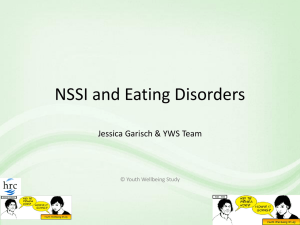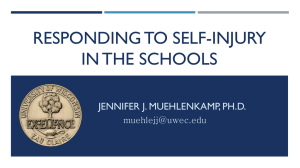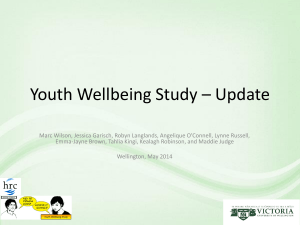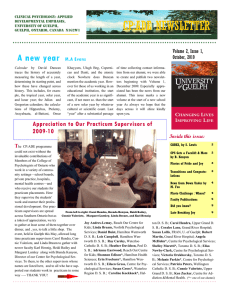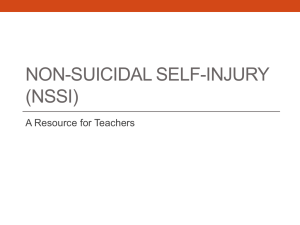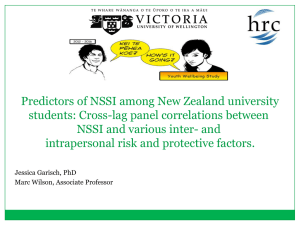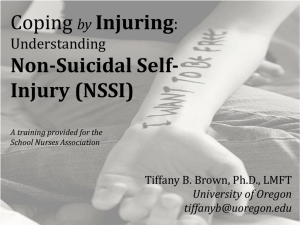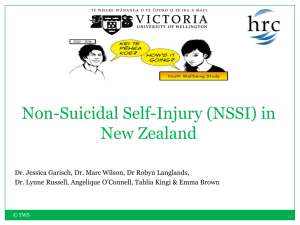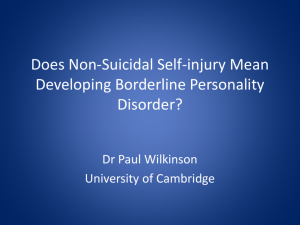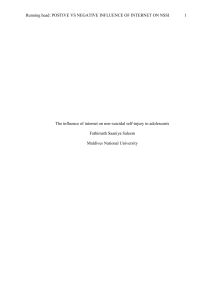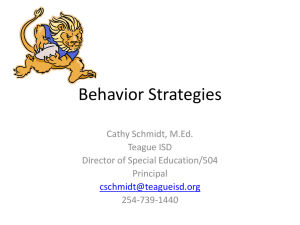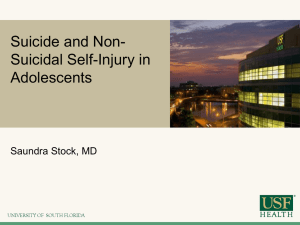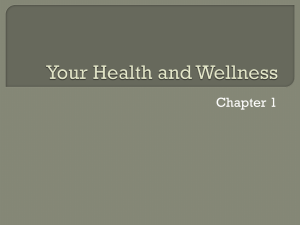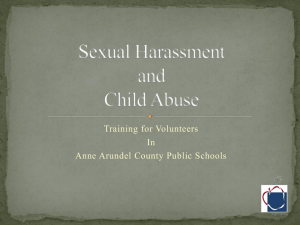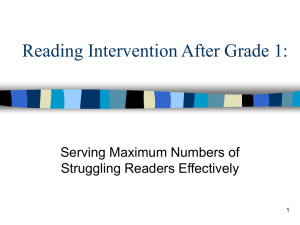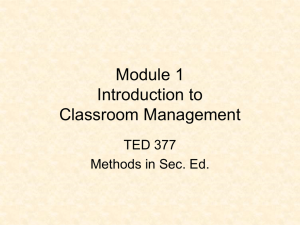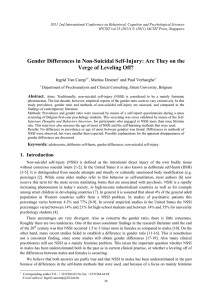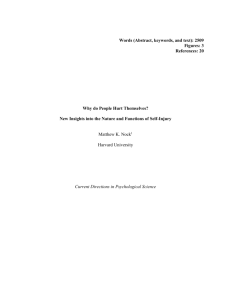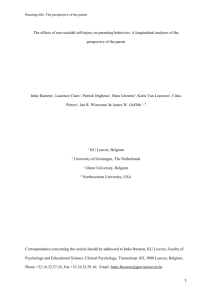presentation ( format)
advertisement
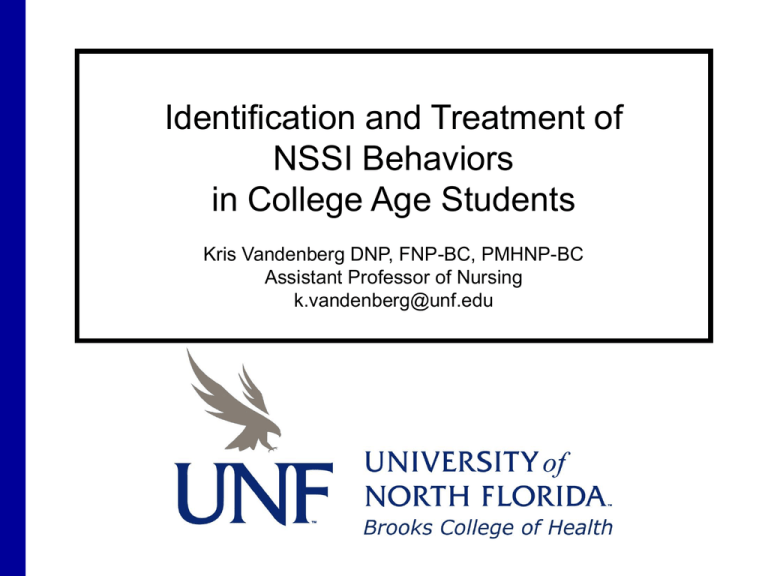
Identification and Treatment of NSSI Behaviors in College Age Students Kris Vandenberg DNP, FNP-BC, PMHNP-BC Assistant Professor of Nursing k.vandenberg@unf.edu Objectives Objective 1 : Discuss definition of NSSI and prevalence among college age students Objective 2 : Identify assessment and interventional strategies when caring for individuals experiencing NSSI Objective 3 : Describe affordable self injury prevention programs based on current evidence based literature References Available as Handout Outline of Presentation Introduction Definition of NSSI Incidence, Prevalence- College Age Students Myths about NSSI. Reasons for self injury Assessment of NSSI Warning signs Observation, what to look for Communication, questions to ask Intervention Therapeutic Approaches Pharmacotherapy Conclusion Question & Answer Understanding What is Self Injury (NSSI)? What constitutes NSSI? When, Where, How ? NSSI- What and Why ? Causing deliberate harm to oneself Not a suicide attempt An unhealthy coping mechanism What Constitutes NSSI? Embedding Why is this Important in College Health? College Age Student Struggles of Students Statistics- vary Myths about Self Injury Myth #1: Self Injury = Suicide Myth #2: Self Injury = Attention-seeking Myth #3: Self Injury= History of abuse Assessment Visualization Informal Discussions Formal Assessment Visualization & Informal Discussions Frequent Injuries Long pants/shirts Low self esteem Relationship problems Making poor grades Secretive behaviors Substance Abuse Social Isolation Signs of depression Screening Tool Year Items Description Chronic Self-Destructiveness Scale (CSDS) 1985 73 Looks at impulsivity, high risk behaviors Self- Harm Behavior Survey 1986 174 Self harm behaviors, feelings , functions Self- Injury Survey 1994 31 + Self injury & suicidal ideation Functional Assessment of Self-Mutilation 1997 39 Self injury behaviors Impulsive & Self Harm Questionnaire 1997 14 Self harm, suicidal ideation (Dissertation) Self- Injurious Behavior Questionnaire (SIB-Q) 1997 25 Self injury among disabled. (Clinician) Self- Injury Questionnaire (SIQ) 1997 54 Self Injury behaviors Timed Self-Injurious Behavior Scale 1997 16 Self Injury among disabled The Self-Harm Inventory (SHI) 1998 22 Self Injury & detect BPD Self-Injury Questionnaire (SIQ) 1999 30 Self injury, history childhood trauma Deliberate Self ham Inventory (DSHI) 2001 17 Destruction of body tissue Non-Suicidal Self –Injury Assessment Tool (NSSI-AT) 2006 20 Self Injury (on-line ) Adolescent Risk Inventory 2007 33 High risk behaviors & attitudes Self- Injurious Thoughts & Behavior Interview 2007 -- Structured interview/ Self injury Smith, B.D. (2008) Therapeutic Approaches Recognize Biases Teach Coping Skills Supportive Listening Referral -Counseling Self Injury Log Psychopharmacology Self Injury – Programs/ Sites Cornell Research Program on Self- Injurious Behaviors Safe Alternatives First Signs (UK) The Self-injury Foundation Self Injury Awareness Day: MARCH 1st - every year ! Their words… Conclusion Always ask about NSSI Therapeutic Refer out Teach coping Watch for infection Be aware of your own bias !
